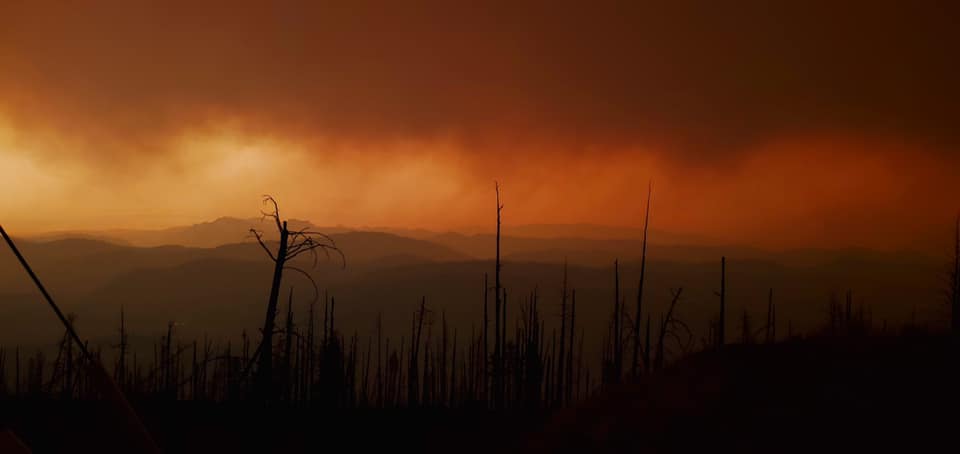Nearly 60,000 western wildfires destroyed more than 10 million acres in 2020, making it one of the worst seasons ever. As another begins, battled-tested electric cooperatives are readying strategies to prepare and mitigate damage.
“It comes down to prevention and protecting our members,” said Dave Markham, president and CEO of Central Electric Cooperative in Redmond, Oregon.
Unlike tornados that devastate in single short spurts or hurricanes that may be predicted weeks in advance, wildfires can spark at any time and often go unnoticed until dangerously out of control. These fires gain strength and size as they consume woody debris and other fuel in their path and can spread destruction for weeks or even months.
In northern Colorado’s drought-plagued mountains, Poudre Valley REA experienced its greatest devastation ever from wildfires in 2020: 400 distribution poles and 20 miles of power line were destroyed, and a substation was severely damaged.
As what came to be known as the Cameron Peak Fire began to spread in August 2020, the co-op worked simultaneously to support first responders, protect infrastructure and restore electricity.
“Preparing for the fire and restoration was challenging due to the fire’s unpredictable nature,” said John Bowerfind, chief operating officer at the Fort Collins, Colorado-based co-op.
“We created and followed our plan while remaining flexible, with the ability to pivot and change course as the fire conditions changed.”
That meant lots of communication with fire authorities and members about when an area would be repaired and re-energized. The co-op used social media, livestreamed events and local media coverage to share the latest developments.

The blaze began about 15 miles from the Red Feather Lakes community served by PVREA. It roared into the co-op’s service area in waves, appearing to recede then raging back in short bursts when the weather turned drier and windy. The wildfire was not fully contained until December.
Fire incident command called for the largest public safety power shutoffs PVREA had ever experienced. Because the co-op had asked suppliers in advance to have materials readily available, damaged segments were repaired and lines were re-energized quickly.
“Every natural disaster is different—our response plan provides a starting point and must remain flexible,” said Bowerfind. “We were planning for the restoration and rebuilding efforts before facilities were destroyed by the fire.”
In Oregon, more than 1.5 million acres burned in 2020, making it one of the most destructive wildfire seasons in the state’s history. Flames along the Cascade Range whipped by 70 mph gales threatened CEC territory, but the co-op was spared when winds diminished.
“We dodged a potential catastrophe,” said Markham. “But we realize it is getting drier and hotter and there are more dead and dying trees.”
With more than half of CEC’s service territory across federal lands, Markham has testified before Congress on how delays in approvals for right-of-way upgrades, maintenance and improvements can have serious consequences. It took over a year to receive approval from the U.S. Forest Service to replace 131 aging power poles and remove encroaching vegetation along a 13-mile overhead power line route on federal land, he said.
“We are in a significant drought,” he said. “Going into summer, this is the time of year we will get lightning storms.”
CEC’s wildfire plan covers inspection and maintenance, operational practices, situational and conditional awareness, and response and recovery. Brad Wilson, who as director of operations and engineering heads the co-op’s wildfire mitigation efforts in the field, calls the plan “a living document.”
“While we will annually review the plan and update as needed, events in real-time may require some flexibility in its execution,” he said.
Cathy Cash is a staff writer at NRECA.

